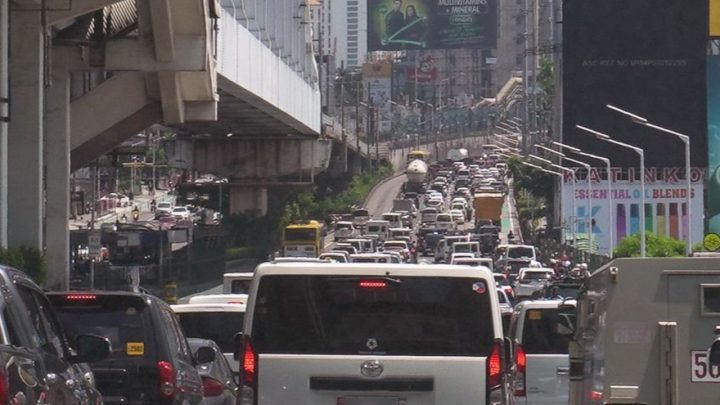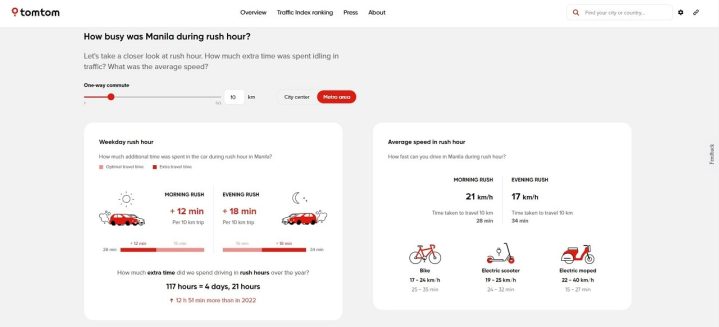
And Metro Manila tops the charts yet again, folks! And it’s not even in a good way. In recent reports, Metro Manila Traffic ranked as the worst among 55 countries! How was this accomplished? In 2023, traveling a mere 10 kilometers would take 25 minutes and 30 seconds. If you think that’s slow, that time went up by 50 seconds from the preceding year. Oh, sadness.
Worse Metro Manila Traffic in 2023 compared to previous year

Photo: TomTom International BV
Based on data from tomtom.com, a website of “mapmakers… in location technology for over 30 years” and its Traffic Index, Metro Manila traffic topped the charts in a 2023 World Ranking of longest travel time for a 10-kilometer distance. In 2022, that same distance would have been covered in 24 minutes and 40 seconds, but in 2023, that only became longer – and much worse – by 50 seconds. Last year, 10 kilometers would take 25 minutes and 30 seconds to reach. The longest time for the same distance was in horrid traffic on December 15, 2023. That averaged 31 minutes and 50 seconds.

Photo: TomTom International BV
It gets worse.
According to tomtom.com’s studies, Metro Manila traffic in 2023 added 12 minutes of idling time for every 10-kilometer distance during the morning rush hour, and a longer 18 minutes during the evening rush hour. So, if you travel 20 kilometers in the morning, that should take you 32 minutes (in an ideal world), but given the Manila traffic situation, you need 56 minutes to cover that distance. In the evening, that translates to 1 hour and 8 minutes for the same 20-kilometer distance.
In the same image, we can see that alternative modes of transportation, including active transport, seem to have it better in terms of travel times. There are pros and cons for these types of mobility, though, but that’s something for a different article. At this point, all we can be sure of is that it’s only gotten worse, and it might just get even worse at the end of this year, 2024.

Many of us always hear that “Wala nang pag-asa ang traffic sa Metro Manila [There’s no hope for Metro Manila traffic]”, and as it stands, those who say and believe this may be right.
A lot has been pushed by the government to address this problem – better options for public transport and promotion of safer active transport means – but it won’t be wrong to say that it’s not enough and it’s taken (or taking) too long. Metro Manila is a very car-centric metropolis and that’s a fact, and it is quite sad knowing that the welfare of active and public transport-takers took this long to become anywhere close to “top-of-mind” for urban planners and developers.
If there’s a takeaway from what tomtom.com shows about Metro Manila traffic, it’s that we need better and more alternatives for mass public transport, and we need them much sooner than later.
So how was your travel time today?


